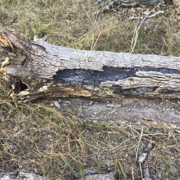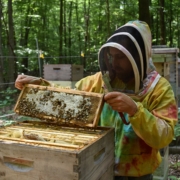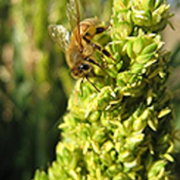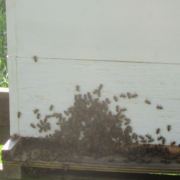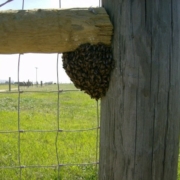Beekeeping: Overwintering Bees in Warm Places
 Print This Post
Print This Post
By Justin Duncan, NCAT Sustainable Agriculture Specialist
I recently drove 250 miles to teach some new beekeepers how to ensure their hive survived a brutal cold snap. I hear too many tales of beekeepers losing hives to this or that. I myself lost one this past summer because I added sheep to the homestead, and sheep really enjoyed my cassava bushes that were protecting one of my hives from the brutal effects of the Texas summer sun. I was traveling a lot, so I couldn’t take the necessary actions to save the hive. They absconded, and by the time I made it home, the comb had all melted from the heat. Lessons learned. Losing hives is no fun, especially when something can be done about it, so I was happy to help them secure their hive against the cold.
If you hadn’t noticed, I’m from Texas. We usually don’t have problems keeping hives alive over the winter. The bees know what to do just fine in nature. But we don’t necessarily move in ways that mesh totally with nature and therein lies a bit of a weakness. We do things like make nucs. And when there are only two frames active in a nuc and it is dropping to 14°F, it is probably not going to make it.
Bees start to cluster together when it is below 65°F. This cluster continues to tighten until temperatures reach 23°F. Workers must consume honey to generate heat at these low temperatures and in nature they’d normally be fine because they’d have adequate workers and honey stores to tide them over, but in a recently made nuc? Not so much. Don’t get me wrong, bees are amazing survivalists. They do things like decoupling their wing muscles so they can vibrate their bodies to become heater bees and getting their individual body temperatures up to eleventy-one degrees (that’s 111°F if you aren’t a Tolkien reader). They just need conditions to be right for them to use their evolutionary survival tactics. If a bee’s body temperature falls below 45°F, it will die.
So, when there’s an arctic blast hurtling towards a newly made nuc, steps need to be taken in order to ensure survivability. Some things to keep in mind: location, duration, and weight. Bees should be in a protected area; for me, wind is a primary concern. I keep vulnerable colonies in microclimates, much like gardeners do with vulnerable plants. Building a temporary shelter for beehives from plywood might be helpful, too, if necessary. The hive itself should be inspected for cracks or gaps so those can be sealed up to limit air exchange. An entrance-reducer also comes in handy, but instead of using it to ward off robber bees, it is used to help keep the cold out and the warmth inside the hive.
Some folks join weaker colonies together, which helps with the variables of weight and duration. If you move your hive a bit, you can get an idea of its weight. I learned this from greenhouse production—if a pot is nudged a bit and it feels light, water it. If a hive feels too light, then feed it. In this situation, you know that something is wrong, but it’s likely to be too cold to open and inspect. You’ll have to ask yourself how long this will last. Down here in southern Texas, it is likely it won’t last too long, maybe a week, so usually whatever the issue, it’ll keep until more can be done. It’s like on those old shows where someone gets gravely injured and the doctor says “If he makes it through the night, he’ll live.” We just need to keep the bees alive through this rough patch and then they should be okay.
Related ATTRA Resources:
Alternative Pollinators: Native Bees
Episode 196. Beekeeping and Agritourism
This blog is produced by the National Center for Appropriate Technology through the ATTRA Sustainable Agriculture program, under a cooperative agreement with USDA Rural Development. ATTRA.NCAT.ORG.

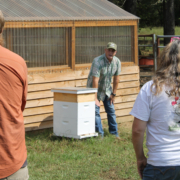
 USDA photo by Lance Cheung
USDA photo by Lance Cheung